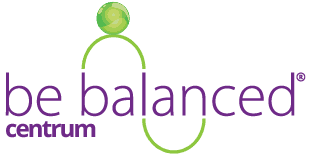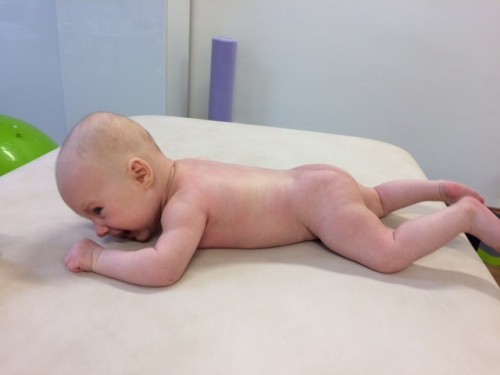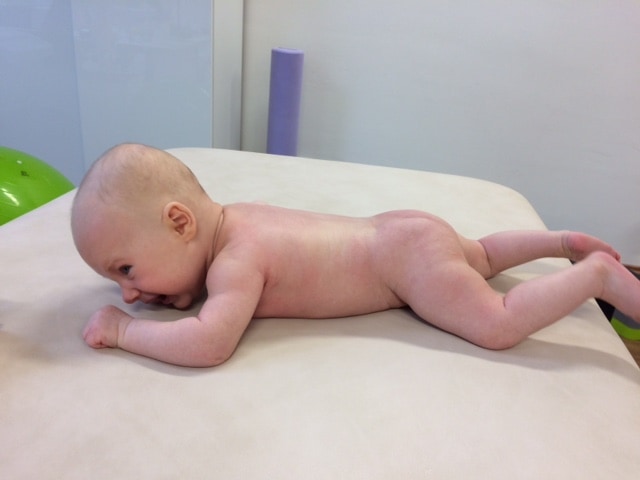Vojtova metoda u novorozenců a kojenců
Vojtova metoda je již v české společnosti poměrně dobře známá. Aby ne, když jejím autorem je Čech, prof. Václav Vojta. Je známá ale i v zahraničí, především v Německu a Itálii má velkou základnu. Právě v těchto zemích Vojta svou metodu rozvíjel, protože byl za minulého režimu v nemilosti. Okolo této metody panuje spousta mýtů a nepravd. A není se čemu divit. Vojtova metoda je často cvičena nesprávně.
Princip Vojtovy metody je založen na tom, že je potřeba mozku dát určitou přesnou informaci z těla a tato informace spustí ideální pohybové programy, které máme v mozku všichni uložené. Některé děti ale tyto programy nemusí mít dobře dostupné a proto jejich motorika není ideální a hledají si určité náhradní mechanizmy. Jedním takovým je třeba způsob otáčení. Pokud se dítě vyvíjí správně, mělo by otáčení začínat pohybem ruky přes střed za hračkou, k tomu by se měla přidat svrchní noha, která nakročí dopředu a tahem břišních svalů se dítě přetočí. Protože ale břišní svaly jsou často zapojené nedostatečně, otáčení probíhá tak, že dítě sahá po hračce, jde do záklonu a odkopnutím za tělem se přetočí na bříško. Takovýchto náhradních mechanizmů bychom našli spoustu.
Kvalita práce mozku závisí právě na vstupních informacích, které do něj přicházejí. Proto můžeme modulovat jeho aktivitu právě přes určité cílené podněty. Ve Vojtově metodě to je nastavení těla do určité polohy a stimulace určitých bodů, či zón, které obsahují velké množství receptorů. Pokud je poloha držena správně a terapeut má správnou představu o tom, co je potřeba stimulovat, dítě začne ihned reagovat – zapojovat správné svaly do souhry a provádět žádoucí, kvalitní pohyb. Dítě musíme ale v poloze držet a jeho pohyb brzdit, jednak abychom odpověď sumovali a tedy aby reakce byla silnější, a také proto, aby nám dítě z polohy „neuteklo“.
Při takovém cvičení dítě obvykle pláče. Dítě pláče vždy, když se mu něco nelíbí, má nějaký dyskomfort či musí překonávat námahu. A tak je tomu i ve Vojtově metodě. Dítě komunikuje nelibost, že je pevně drženo a musí dělat něco, co je namáhavé a nezvyklé. Právě pláč bývá hlavní překážkou ve cvičení pro rodiče. Bývá interpretován jako, že dítě cvičení a tlaky bolí. Při správném cvičení Vojtova metoda rozhodně nebolí! Dítě je nutné držet pevně a plošně, ale ne silou a ostrými tlaky.
To, jak bude dítě cvičení snášet, závisí hlavně na rodičích. Pokud bude cvičení stres pro rodiče a rodič bude mít pocit, že dítě trápí, bude tuto úzkost přenášet i na dítě. Rodič si tedy musí srovnat v hlavě, jaké benefity dítěti cvičení přináší a zaujmout ten postoj, že někdy je potřeba dělat věci, které jsou nepříjemné a namáhavé a to právě posune člověka dál. V životě to tak je. Občas je potřeba překonat překážku, za kterou se skrývá odměna. Čím více se budeme překážce vyhýbat, tím bude narůstat.
Přesně tak to platí v pohybovém vývoji dítěte. Ten se dá nejsnáze ovlivnit právě u velmi malých miminek. Vojta se cvičí nejlépe v prvních týdnech až měsících života dítěte. Později je to těžší a těžší. Dítě je velké a vědomější. Ví, jaký pláč na rodiče funguje a neváhá ho hned použít. Také větší dítě, myšleno po 3. měsíci života, už má vypěstované náhradní mechanizmy, kterých se obtížněji zbavuje a nahrazuje je těmi optimálními. Pokud budete odchylky u malých miminek přehlížet a vysvětlovat si to tím, že přece každý to má jinak, dítě roste podle tabulek a dožene to později, možná budete překvapení, až se dítě postaví, proč je tak prohnuté, má nožičky do X a odstáté lopatky. Pak rodiče běhají s dítětem po ortopediích, rehabilitacích a nápravných cvičeních. Ve finále je to mnohem větší stres a více slz, protože přemlouvejte tří, čtyřleté dítě ke cvičení.
Nejsem ortodoxním zastáncem cvičení „vojtovky“ za každou cenu. Některé děti jsou úzkostnější a ve vojtovce nereagují dobře. I přesto, že jsem fyzioterapeutka, kladu větší důraz na psychickou pohodu a vyrovnanost. Nemá podle mě tedy cenu cvičit s úzkostným dítětem, které má určitý dyskomfort. První bych řešila tu úzkost či dyskomfort, cvičení až v další řadě. To ale neplatí v případě, že dítě by mohlo být ohroženo rozvojem DMO – tedy dětské mozkové obrny. V tom případě musí tyto aspekty jít stranu a je nutné cvičit a cvičit. Už v prvních týdnech totiž můžete rozhodnout o tom, zda dítě bude jednou chodit, či zůstane nechodící.
Mgr. Dagmar Lisá
Ve fyzioterapii Be Balanced cvičí Vojtovu metodu plně kvalifikovaný fyzioterapeut. Více zde.


